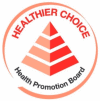Using Sensory Cues to Optimise the Satiety Value of a Reduced-Calorie Product Labelled 'Healthier Choice'
- PMID: 31905979
- PMCID: PMC7019941
- DOI: 10.3390/nu12010107
Using Sensory Cues to Optimise the Satiety Value of a Reduced-Calorie Product Labelled 'Healthier Choice'
Abstract
Reformulation strategies to reduce the energy density of commonly consumed foods and beverages are intended to support weight management, but expectations generated by labelling these as 'healthier' alternatives can have unintended effects on the product's sensory evaluations and consumption behaviours. We compared the impact of four different strategies for presenting a lower-calorie beverage to consumers on product perceptions, short-term appetite and energy intake. Participants (N = 112) consumed higher- (211 kcal/portion) and lower-calorie (98 kcal/portion) fixed-portion soymilks in the morning across two test days, with the lower-calorie version presented in one of four contexts varying in label information and sensory quality: (1) sensory-matched/unlabelled, (2) sensory-matched/labelled, (3) sensory-reduced (less sweet and creamy)/labelled, and (4) sensory-enhanced (sweeter and creamier)/labelled. The label was Singapore's Healthier Choice Symbol, which also highlighted that the soymilk was lower calorie. Changes in reported appetite, ad libitum lunch intake, and self-reported intake for the rest of the text day were recorded. Results indicated that total energy intake was consistently lower on the days the lower calorie beverages were consumed, regardless of how they were presented. However, the 'healthier choice' label increased hunger prior to lunch and reduced the soymilks' perceived thickness and sweetness compared to the same unlabelled version. Increasing the product's sensory intensity successfully maintained liking, experienced sensory quality and appetite. Results suggest that food companies wanting to explicitly label product reformulations could combine messages of 'lower calorie' and 'healthier choice' with appropriate taste and texture enhancements to maintain acceptance and avoid negative effects on appetite.
Keywords: calorie reduction; eating behaviour; health labelling; satiety; sensory evaluation.
Conflict of interest statement
CFG is on the Scientific Advisory Board for Kerry Health and Nutrition Institute and has received reimbursement for speaking at meetings sponsored by companies selling nutritional products. The authors declare no other conflict of interest.
Figures





Similar articles
-
Removing energy from a beverage influences later food intake more than the same energy addition.Appetite. 2016 Oct 1;105:549-56. doi: 10.1016/j.appet.2016.06.030. Epub 2016 Jun 26. Appetite. 2016. PMID: 27356202
-
Additive effects of sensory-enhanced satiety and memory for recent eating on appetite.Appetite. 2017 Oct 1;117:335-341. doi: 10.1016/j.appet.2017.07.018. Epub 2017 Jul 17. Appetite. 2017. PMID: 28729200 Clinical Trial.
-
Does modifying the thick texture and creamy flavour of a drink change portion size selection and intake?Appetite. 2014 Feb;73:114-20. doi: 10.1016/j.appet.2013.10.020. Epub 2013 Nov 9. Appetite. 2014. PMID: 24220316
-
Sweetness, satiation, and satiety.J Nutr. 2012 Jun;142(6):1149S-54S. doi: 10.3945/jn.111.149583. Epub 2012 May 9. J Nutr. 2012. PMID: 22573779 Review.
-
Sensory influences on food intake control: moving beyond palatability.Obes Rev. 2016 Jan;17(1):18-29. doi: 10.1111/obr.12340. Epub 2015 Dec 11. Obes Rev. 2016. PMID: 26662879 Review.
Cited by
-
Acceptability of Vegetable Fortified Ugali in Sub-Saharan Africa.Nutrients. 2021 Sep 27;13(10):3405. doi: 10.3390/nu13103405. Nutrients. 2021. PMID: 34684406 Free PMC article.
-
A Critical Appraisal of the Evidence Supporting Consumer Motivations for Alternative Proteins.Foods. 2020 Dec 23;10(1):24. doi: 10.3390/foods10010024. Foods. 2020. PMID: 33374855 Free PMC article. Review.
-
Using Smartphones When Eating Increases Caloric Intake in Young People: An Overview of the Literature.Front Psychol. 2020 Dec 3;11:587886. doi: 10.3389/fpsyg.2020.587886. eCollection 2020. Front Psychol. 2020. PMID: 33343462 Free PMC article. Review.
References
-
- Public Health England Sugar Reduction and Wider Reformulation Collection. [(accessed on 31 January 2019)];2017 Available online: https://www.gov.uk/government/collections/sugar-reduction#sugar-reduction.
-
- Public Health England Calorie Reduction: The Scope and Ambition for Action. [(accessed on 31 January 2019)];2018 Available online: https://www.gov.uk/government/publications/calorie-reduction-the-scope-a....
MeSH terms
LinkOut - more resources
Full Text Sources

